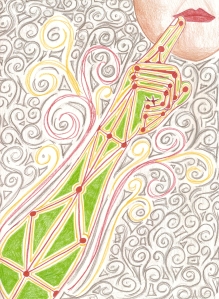
 eaf Clubs were places where Deaf people could gather together to chat and socialize on a day to day basis. Much more than a place for card games and conversation, Deaf Clubs were deeply ingrained into the Deaf Culture of their time providing a place where Deaf people could attend performances by Deaf comedians, plays, lectures, film screenings, and holiday parties, as well as get caught up on the news of the day, conduct business and arrange for services before telephones were practical. Deaf Clubs even frequently sponsored athletic events and group outings. Many of the cultural practices still visible in the Deaf community today have their roots in Deaf Club performances, including ABC Stories.
eaf Clubs were places where Deaf people could gather together to chat and socialize on a day to day basis. Much more than a place for card games and conversation, Deaf Clubs were deeply ingrained into the Deaf Culture of their time providing a place where Deaf people could attend performances by Deaf comedians, plays, lectures, film screenings, and holiday parties, as well as get caught up on the news of the day, conduct business and arrange for services before telephones were practical. Deaf Clubs even frequently sponsored athletic events and group outings. Many of the cultural practices still visible in the Deaf community today have their roots in Deaf Club performances, including ABC Stories.
Though the 1940s and 1950s were the golden age for Deaf Clubs, many started meeting as early as the late 1910’s. These early clubs usually rented space in which to meet, and frequently the places changed location. As Clubs gained in popularity, many were able to collect dues from their members and buy permanent accommodations. These were the first public spaces owned by Deaf people, spaces carved out of a Hearing wilderness to form permanent places where Deaf could be themselves without reservation.
Deaf Clubs were born out of the solitary lives most Deaf people led during the 1920’s to the 1950’s. Many were working in jobs with no other Deaf people around, such as blue collar jobs in manufacturing and printing. In a time before the civil rights movement, interpreters and other important communication tools were frequently unavailable and Deaf people were expected to perform their mindless assembly line job without comment. The Deaf Club was a place to go and blow off steam, where everyone spoke the same language and was ready for fun.
In the 1960’s, Deaf Clubs began to decline. As more and more Deaf people started working in white collar jobs such as teaching, and the civil rights movement insisted to America that everyone deserved to be treated equally, Deaf people were not so isolated in the workplace. The invention of the TTY in the 1970’s and the wider use of Closed Captioning put the final nails in the Deaf Club coffin. Deaf people no longer needed the Clubs for entertainment, nor to conduct business or arrange for services. There are still a few Deaf Clubs in America, but their membership is usually small and decidedly aging. The era of Deaf Clubs is definitively over.

4 comments
Comments feed for this article
December 2, 2009 at 8:23 AM
ostrov
Thank you,
very interesting article
July 28, 2010 at 12:35 PM
monica
as a coda i have never been to a deaf club where i live they closed down long before me. i still belive that there is a need for them. even though thoughout my child hood i have never been in a deaf club my mother attended deaf pizza night, coffee night and and any other deaf night religiously. I think that a deaf club in my area wouldn’t be a bad idea. though technology has impoved so much it seems to me that a lot of people are reverting back to old ways of getting in touch.
May 28, 2011 at 1:17 PM
katie
I completely agree, Monica. My mom is a sign language interpreter and I have many, many deaf friends. We are actively involved in the deaf community and have heard many of them mention how much they miss deaf clubs. Where I am from, there are very few events for the deaf, which is why I am thinking about getting some people together and starting one. Any suggestions?
August 3, 2011 at 7:20 PM
annette
My (former) step-father is Deaf, and we went to the Deaf Club every Friday in Washington, DC in the ’70’s. Mostly they socialized and watched captioned movies while the kids either played or watched the movies,too. It was a time I enjoyed, maybe as much as the Deaf. Not only did I get to play, but I learned to love the Deaf Culture as it was at that time. I agree that a Deaf Club would be nice and beneficial still, many other things have taken the place of the old Deaf Club. Now there are Deaf Coffees, Silent Suppers, and other events all the time.